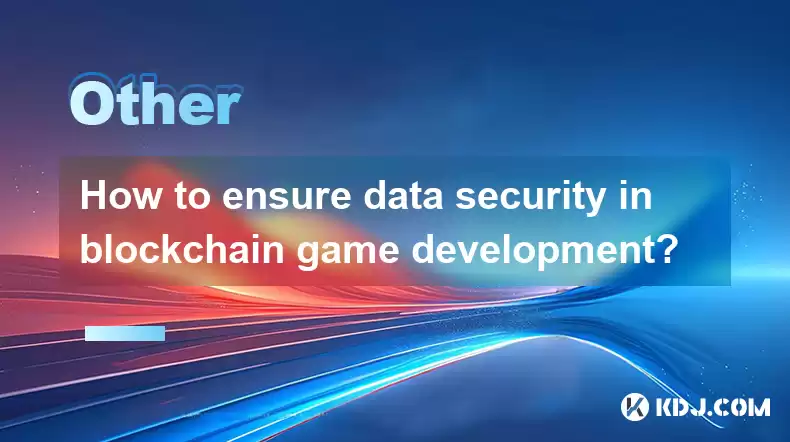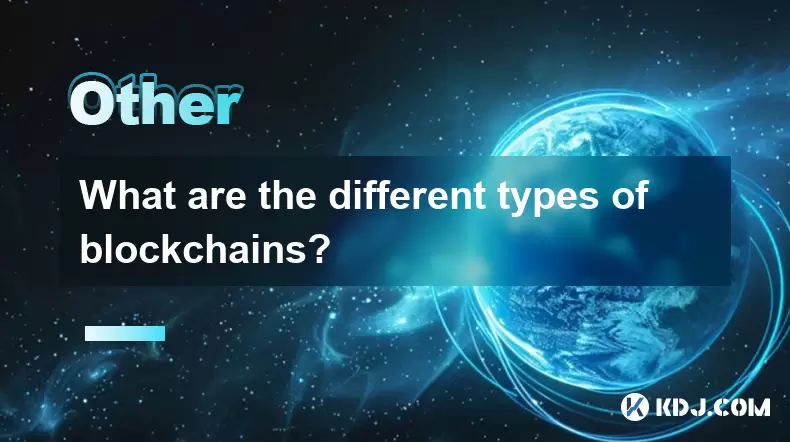-
 Bitcoin
Bitcoin $112400
-1.07% -
 Ethereum
Ethereum $3409
-3.27% -
 XRP
XRP $2.784
-6.60% -
 Tether USDt
Tether USDt $0.9997
-0.03% -
 BNB
BNB $739.3
-2.09% -
 Solana
Solana $158.0
-2.90% -
 USDC
USDC $0.9998
-0.02% -
 TRON
TRON $0.3213
-0.94% -
 Dogecoin
Dogecoin $0.1929
-5.01% -
 Cardano
Cardano $0.6974
-2.82% -
 Hyperliquid
Hyperliquid $36.69
-2.31% -
 Sui
Sui $3.327
-4.80% -
 Stellar
Stellar $0.3672
-5.18% -
 Chainlink
Chainlink $15.65
-3.07% -
 Bitcoin Cash
Bitcoin Cash $525.0
-1.68% -
 Hedera
Hedera $0.2291
-6.00% -
 Avalanche
Avalanche $20.91
-2.96% -
 Ethena USDe
Ethena USDe $1.000
0.00% -
 Toncoin
Toncoin $3.520
-1.12% -
 UNUS SED LEO
UNUS SED LEO $8.968
0.14% -
 Litecoin
Litecoin $105.7
0.26% -
 Shiba Inu
Shiba Inu $0.00001181
-1.79% -
 Polkadot
Polkadot $3.492
-2.08% -
 Uniswap
Uniswap $8.800
-3.10% -
 Dai
Dai $0.9999
-0.01% -
 Monero
Monero $289.9
-3.17% -
 Bitget Token
Bitget Token $4.243
-1.27% -
 Pepe
Pepe $0.00001006
-3.67% -
 Cronos
Cronos $0.1248
-5.68% -
 Aave
Aave $249.7
-2.50%
How to ensure data security in blockchain game development?
Blockchain game developers must implement robust security measures, including smart contract audits, encryption, and MFA, to protect player data and maintain trust.
Apr 19, 2025 at 01:49 am

Ensuring data security in blockchain game development is crucial for maintaining the integrity and trust of players and stakeholders. Blockchain technology itself provides a robust foundation for security due to its decentralized nature and cryptographic principles. However, the development process requires additional layers of protection to safeguard sensitive data and prevent unauthorized access. This article delves into the essential strategies and practices that developers can implement to enhance data security in blockchain game development.
Understanding Blockchain Security Fundamentals
Before diving into specific security measures, it's important to grasp the foundational security aspects of blockchain technology. Blockchain operates on a decentralized network where data is stored in blocks and secured through cryptographic means. Each block contains a list of transactions, and once a block is added to the chain, it is immutable, meaning it cannot be altered or deleted. This immutability is a key feature that enhances security, as it ensures that once data is recorded, it remains unchanged.
In addition to immutability, cryptography plays a vital role in blockchain security. Transactions are secured using cryptographic algorithms, and participants in the network use private and public keys to authenticate and verify transactions. This cryptographic security helps prevent unauthorized access and tampering with data.
Implementing Secure Smart Contracts
Smart contracts are self-executing contracts with the terms of the agreement directly written into code. In blockchain game development, smart contracts are used to automate various game mechanics and transactions. However, if not properly secured, smart contracts can be vulnerable to attacks. To ensure data security, developers must follow best practices in smart contract development.
- Audit Smart Contracts: Regularly audit smart contracts to identify and fix vulnerabilities. Use reputable auditing firms or automated tools to perform thorough code reviews.
- Use Established Libraries: Leverage well-tested and secure libraries and frameworks to minimize the risk of introducing new vulnerabilities.
- Implement Access Controls: Define strict access controls within the smart contract to limit who can interact with certain functions and data.
- Test Extensively: Conduct extensive testing, including unit tests, integration tests, and penetration testing, to ensure the smart contract behaves as intended under various scenarios.
Protecting User Data and Privacy
User data privacy is a critical concern in blockchain game development. Players often share personal information and in-game assets, which must be protected against breaches and unauthorized access. Here are some strategies to enhance user data security:
- Encryption: Use strong encryption algorithms to protect data both at rest and in transit. Ensure that sensitive data is encrypted before being stored on the blockchain or transmitted over the network.
- Anonymization: Implement data anonymization techniques to reduce the risk of personal data being linked to individual players. This can be achieved by using pseudonyms or other methods to mask personal identifiers.
- Decentralized Identity Management: Utilize decentralized identity solutions to give players control over their personal data. This approach allows users to manage their own identities and share only the necessary information with the game platform.
Securing the Game Infrastructure
The game infrastructure, including servers, databases, and network components, must be secured to prevent data breaches and ensure the overall integrity of the game. Here are some measures to secure the game infrastructure:
- Network Security: Implement firewalls, intrusion detection systems, and other network security measures to protect against external threats. Regularly update and patch network devices to address known vulnerabilities.
- Server Security: Harden servers by removing unnecessary services, applying security patches, and using strong authentication mechanisms. Regularly monitor server logs for suspicious activities.
- Database Security: Use robust database security practices, such as encryption, access controls, and regular backups. Ensure that databases are isolated from public access and protected against SQL injection attacks.
Implementing Multi-Factor Authentication
Multi-factor authentication (MFA) adds an additional layer of security by requiring users to provide two or more verification factors to access their accounts. This can significantly reduce the risk of unauthorized access to player accounts and sensitive data. Here’s how to implement MFA in blockchain game development:
- Choose the Right MFA Method: Select an MFA method that suits your game's needs, such as SMS codes, authenticator apps, or hardware tokens.
- Integrate MFA into the Game: Implement MFA at key access points, such as account creation, login, and sensitive transactions. Ensure that the MFA process is user-friendly to encourage adoption.
- Educate Players: Provide clear instructions and support to help players understand and use MFA effectively. Highlight the security benefits to encourage widespread adoption.
Regular Security Audits and Updates
Continuous monitoring and updating of security measures are essential to maintain data security in blockchain game development. Regular security audits help identify vulnerabilities and ensure that the game remains secure against evolving threats. Here’s how to conduct effective security audits:
- Schedule Regular Audits: Plan and schedule regular security audits to assess the game’s security posture. This can include both internal audits and external audits conducted by third-party security firms.
- Address Vulnerabilities: Promptly address any vulnerabilities identified during audits. Implement fixes and patches to mitigate risks and enhance security.
- Stay Informed: Keep up to date with the latest security trends and threats in the blockchain and gaming industries. Subscribe to security bulletins and participate in relevant forums to stay informed.
Educating Players on Security Best Practices
Educating players on security best practices is crucial for enhancing overall data security in blockchain game development. Players who understand security risks and how to protect themselves can contribute to a safer gaming environment. Here are some ways to educate players:
- In-Game Tutorials: Provide in-game tutorials and guides that explain security best practices, such as using strong passwords, enabling MFA, and recognizing phishing attempts.
- Security Tips and Alerts: Regularly share security tips and alerts through in-game notifications, emails, or social media channels. Keep players informed about potential threats and how to protect themselves.
- Community Engagement: Foster a community of security-conscious players by encouraging discussions and sharing of security-related experiences. Create forums or chat channels dedicated to security discussions.
Frequently Asked Questions
Q: How can blockchain game developers ensure the privacy of player transactions?
A: To ensure the privacy of player transactions, developers can use techniques such as zero-knowledge proofs, which allow transactions to be verified without revealing the underlying data. Additionally, implementing private or permissioned blockchains can provide more control over who can access transaction data.
Q: What role do decentralized storage solutions play in enhancing data security in blockchain games?
A: Decentralized storage solutions, such as IPFS (InterPlanetary File System), can enhance data security by distributing data across multiple nodes, reducing the risk of a single point of failure. These solutions also offer encryption and redundancy, ensuring that data remains secure and accessible even if some nodes fail.
Q: How can blockchain game developers handle data breaches effectively?
A: In the event of a data breach, developers should have an incident response plan in place. This plan should include steps to contain the breach, assess the damage, notify affected players, and implement measures to prevent future breaches. Transparency and communication with players are key to maintaining trust.
Q: Are there any specific regulatory considerations for data security in blockchain game development?
A: Yes, developers must comply with various data protection regulations, such as the General Data Protection Regulation (GDPR) in the European Union. These regulations require developers to implement strong data security measures, provide transparency about data usage, and ensure that players can exercise their rights over their personal data.
Disclaimer:info@kdj.com
The information provided is not trading advice. kdj.com does not assume any responsibility for any investments made based on the information provided in this article. Cryptocurrencies are highly volatile and it is highly recommended that you invest with caution after thorough research!
If you believe that the content used on this website infringes your copyright, please contact us immediately (info@kdj.com) and we will delete it promptly.
- BlockDAG, SEI, Ethena: Top Crypto Performers Under the Microscope
- 2025-08-03 10:50:16
- Bitcoin Blasts Past $119K: How Institutional Adoption and Macro Shifts Fuel the Fire
- 2025-08-03 10:55:16
- Crypto, Grok, and August: Decoding the Latest Trends and Insights
- 2025-08-03 11:10:16
- Crypto, Phishing, and Your Wallet: A New Yorker's Guide to Staying Safe
- 2025-08-03 10:30:16
- Troller Cat Meme Coin Presale Soars: A New King in the Crypto Jungle?
- 2025-08-03 10:30:16
- Grayscale, Altcoin Trust, and Mid-Cap Mania: What's the Deal?
- 2025-08-03 08:50:16
Related knowledge

What is the difference between on-chain and off-chain transactions?
Aug 02,2025 at 04:22pm
Understanding On-Chain TransactionsOn-chain transactions refer to digital asset transfers that are recorded directly on a blockchain ledger. These tra...

What is a node's role in a blockchain network?
Aug 03,2025 at 03:16pm
Understanding the Function of a Node in a Blockchain NetworkA node is a fundamental component of any blockchain network, acting as a participant that ...

What is the double-spending problem and how does blockchain prevent it?
Aug 02,2025 at 01:07pm
Understanding the Double-Spending ProblemThe double-spending problem is a fundamental challenge in digital currency systems where the same digital tok...

What is the difference between a blockchain and a database?
Aug 01,2025 at 09:36pm
Understanding the Core Structure of a BlockchainA blockchain is a decentralized digital ledger that records data in a series of immutable blocks linke...

How does blockchain handle scalability?
Aug 02,2025 at 02:58pm
Understanding Blockchain Scalability ChallengesBlockchain scalability refers to a network's ability to handle an increasing volume of transactions wit...

What are the different types of blockchains?
Aug 03,2025 at 03:01am
Public Blockchains: Open and Decentralized NetworksPublic blockchains are the most widely recognized type of blockchain, characterized by their open a...

What is the difference between on-chain and off-chain transactions?
Aug 02,2025 at 04:22pm
Understanding On-Chain TransactionsOn-chain transactions refer to digital asset transfers that are recorded directly on a blockchain ledger. These tra...

What is a node's role in a blockchain network?
Aug 03,2025 at 03:16pm
Understanding the Function of a Node in a Blockchain NetworkA node is a fundamental component of any blockchain network, acting as a participant that ...

What is the double-spending problem and how does blockchain prevent it?
Aug 02,2025 at 01:07pm
Understanding the Double-Spending ProblemThe double-spending problem is a fundamental challenge in digital currency systems where the same digital tok...

What is the difference between a blockchain and a database?
Aug 01,2025 at 09:36pm
Understanding the Core Structure of a BlockchainA blockchain is a decentralized digital ledger that records data in a series of immutable blocks linke...

How does blockchain handle scalability?
Aug 02,2025 at 02:58pm
Understanding Blockchain Scalability ChallengesBlockchain scalability refers to a network's ability to handle an increasing volume of transactions wit...

What are the different types of blockchains?
Aug 03,2025 at 03:01am
Public Blockchains: Open and Decentralized NetworksPublic blockchains are the most widely recognized type of blockchain, characterized by their open a...
See all articles

























































































